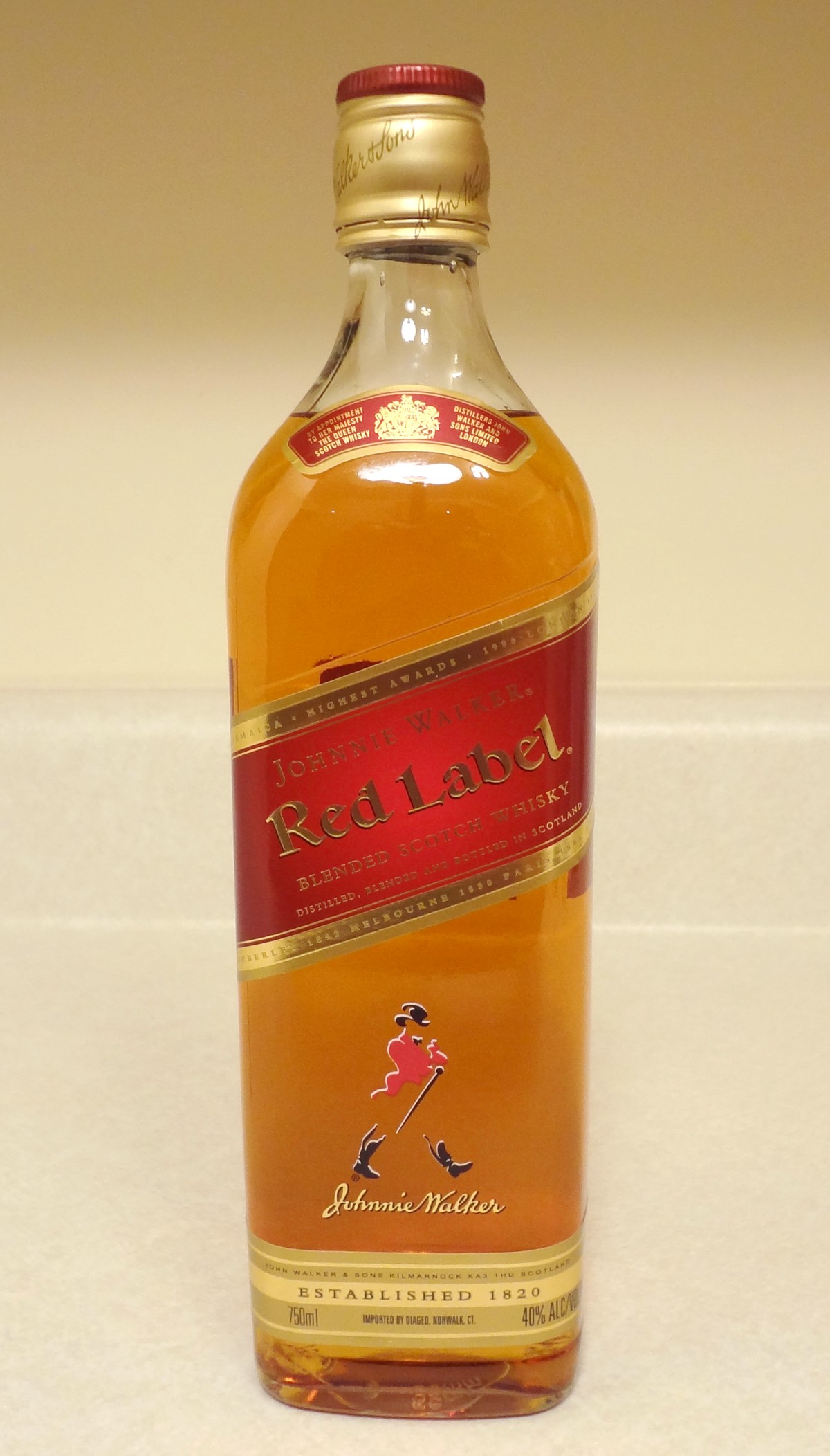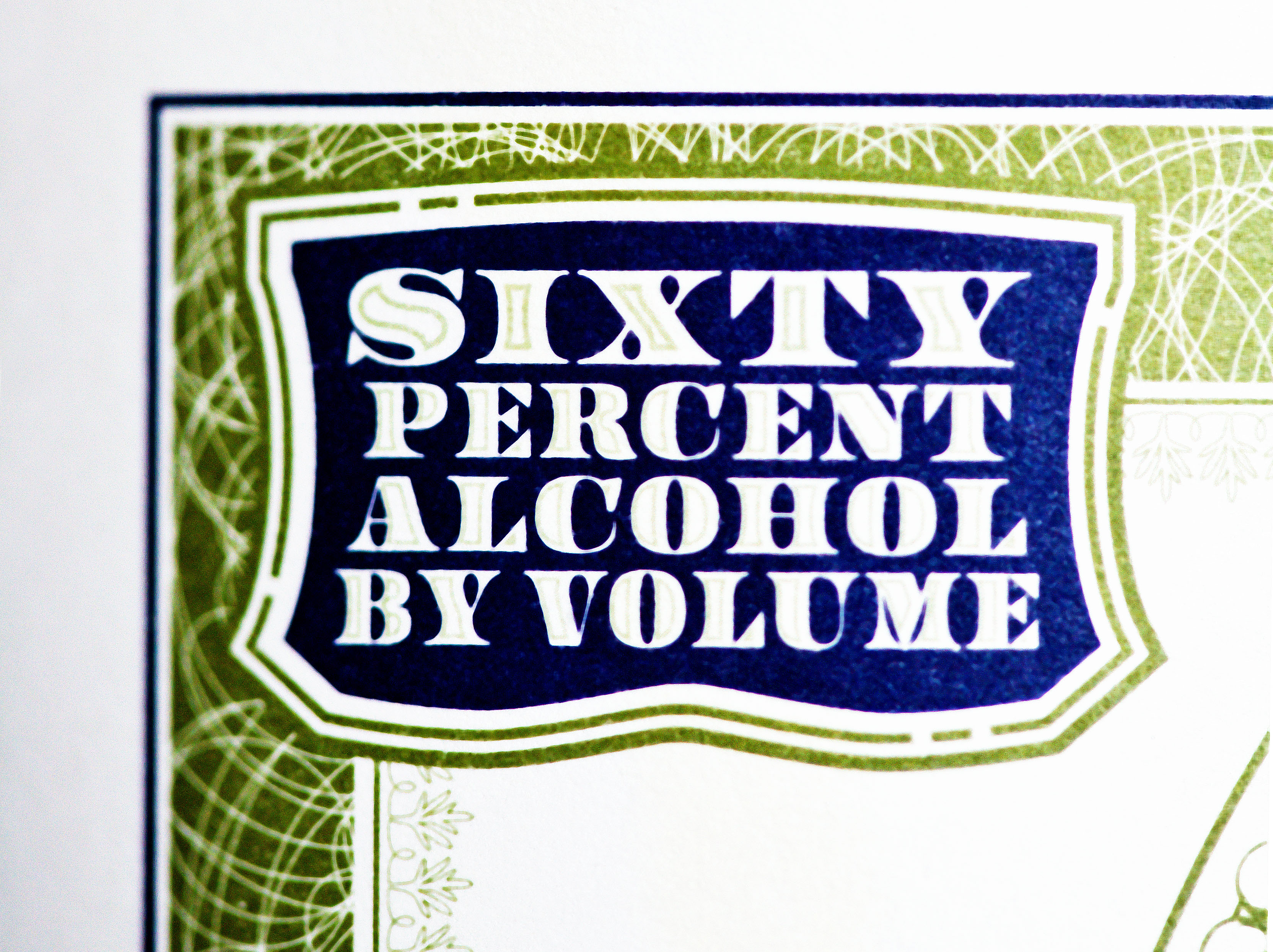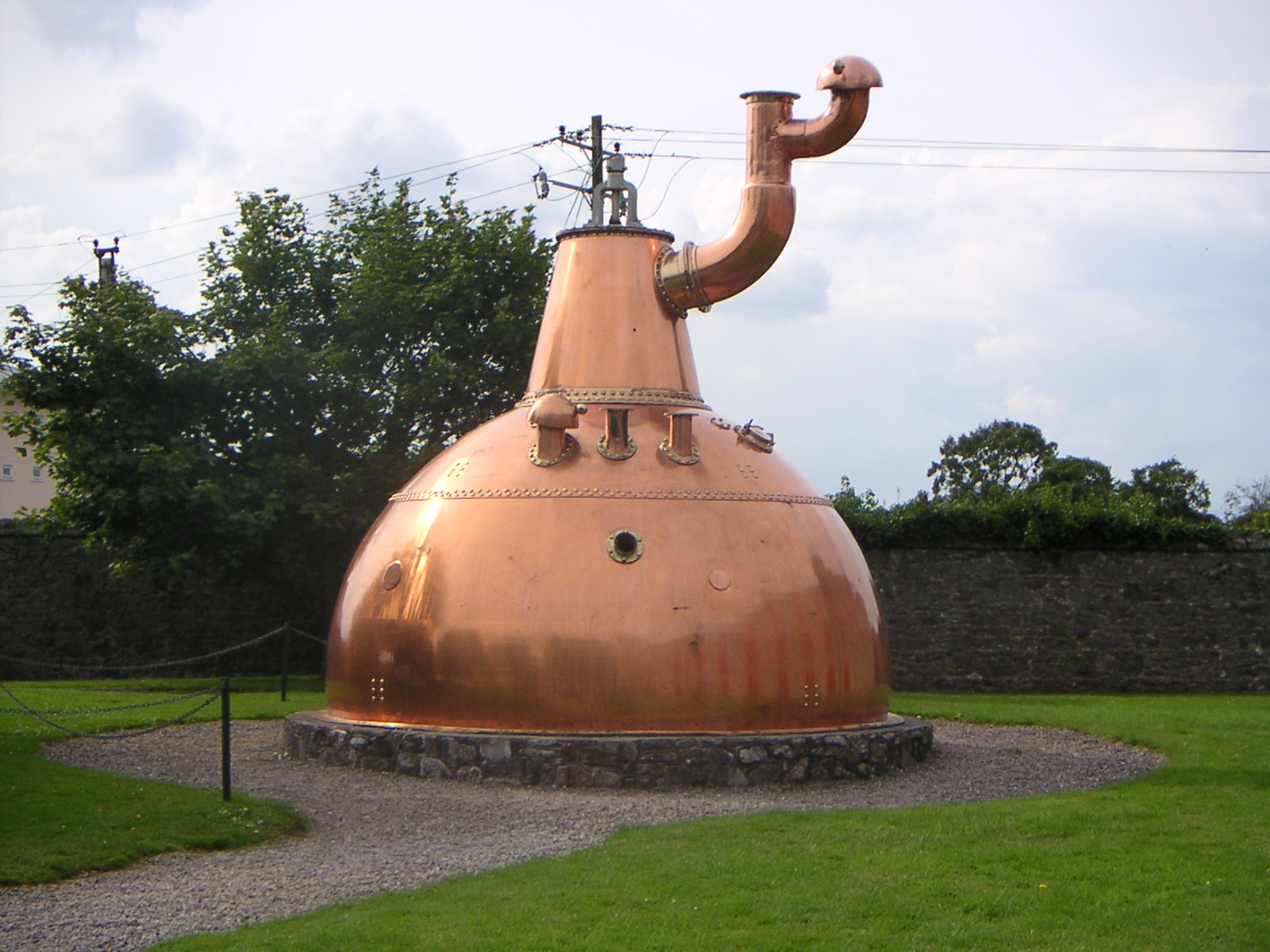|
Grain Whisky
Grain whisky normally refers to any whisky made, at least in part, from grains other than malted barley. Frequently used grains include maize, wheat, and rye. Grain whiskies usually contain some malted barley to provide enzymes needed for mashing and are required to include it if they are produced in Ireland or Scotland. Whisky made only from malted barley is generally called "malt whisky" rather than grain whisky. Most American and Canadian whiskies are grain whiskies. Definition Under the regulations governing the production of both Irish and Scotch whisky, malt whisky must be produced from a mash of 100% malted barley and must be distilled in a pot still. In Scotland, a whisky that uses other malted or unmalted cereals in the mash in addition to malted barley is termed a grain whisky. In Ireland, where regulations define " pot still whiskey" as one distilled from a specific mixed mash of at least 30% malted barley, at least 30% unmalted barley, and other unmalted cereals in ... [...More Info...] [...Related Items...] OR: [Wikipedia] [Google] [Baidu] |
Whisky Barrels
Whisky or whiskey is a type of liquor made from fermented grain mash. Various grains (which may be malted) are used for different varieties, including barley, corn, rye, and wheat. Whisky is typically aged in wooden casks, commonly of charred white oak. Uncharred white oak casks previously used for the aging of port, rum or sherry may be employed during storage to impart a unique flavor and color. Whisky is a strictly regulated spirit worldwide with many classes and types. The typical unifying characteristics of the different classes and types are the fermentation of grains, distillation, and aging in wooden barrels. Etymology The word ''whisky'' (or ''whiskey'') is an anglicisation of the Classical Gaelic word (or ) meaning "water" (now written as in Modern Irish, and in Scottish Gaelic). This Gaelic word shares its ultimate origins with Germanic ''water'' and Slavic ''voda'' of the same meaning. Distilled alcohol was known in Latin as ("water of life"). This was trans ... [...More Info...] [...Related Items...] OR: [Wikipedia] [Google] [Baidu] |
Outline Of Whisky
The following Outline (list), outline is provided as an overview of and topical guide to whisky: Whisky (also "whiskey") – Distilled beverage, distilled alcoholic beverage made from Fermentation in food processing, fermented grain mashing, mash. Various grains (which may be Malting, malted) are used in different varieties, including barley, Maize, corn, rye, and wheat. Whisky is typically Aging (food), aged in wooden casks, generally made of Charring, charred white oak. Whisky is a strictly regulated spirit worldwide. It encompasses many national expressions and variations. The typical unifying characteristics of the different expressions and variations are the fermentation of grains, distillation, and aging in wooden barrels. The spelling whiskey is commonly used in Ireland and the United States, while whisky is used almost exclusively in other whisky-producing countries. National varieties * American whiskeys are distilled from a fermented mash of c ... [...More Info...] [...Related Items...] OR: [Wikipedia] [Google] [Baidu] |
Rye Whiskey
Rye whiskey can refer to two different, but related, types of whiskey: * American rye whiskey, which is similar to bourbon whiskey, but must be distilled from at least 51 percent rye grain * Canadian whisky, which is often referred to as (and often labelled as) rye whisky for historical reasons, although it may or may not actually include any rye grain in its production process. American rye whiskey In the United States, rye whiskey is, by law, made from a Mashing, mash of at least 51 percent rye. (The other ingredients in the mash are usually maize, corn and malted barley.) It is distilled to no more than 160 U.S. proof (80% alcohol by volume, abv) and Aging barrel, aged in charred, new oak barrels. The whiskey must be put in the barrels at no more than 125 proof (62.5% abv). Rye whiskey that has been aged for at least two years and has not been blended whiskey, blended with other spirits may be further designated as Straight whiskey, straight, as in "straight rye whiskey". Hi ... [...More Info...] [...Related Items...] OR: [Wikipedia] [Google] [Baidu] |
Bourbon Whiskey
Bourbon whiskey (; also simply bourbon) is a Aging (food), barrel-aged American whiskey made primarily from corn (maize). The name derives from the Kingdom of France, French House of Bourbon, although the precise source of inspiration is uncertain; contenders include Bourbon County, Kentucky, and Bourbon Street in New Orleans, both of which are named after the House of Bourbon.Kiniry, Laura.Where Bourbon Really Got Its Name and More Tips on America's Native Spirit". ''Smithsonian (magazine), Smithsonian''. June 13, 2013. The name ''bourbon'' might not have been used until the 1850s, and the association with Bourbon County was not evident until the 1870s. Although bourbon may be made anywhere in the U.S., it is associated with the Southern United States, particularly Kentucky. One reason for this association is the romanticized advertising in the 1990s of bourbon as a product of Kentucky with rural, Southern origins. There is a List of common misconceptions, common misconception t ... [...More Info...] [...Related Items...] OR: [Wikipedia] [Google] [Baidu] |
Straight Whiskey
Straight whiskey (or straight whisky), as defined in United States law, is whiskey that is distilled from a fermented (malted or unmalted) cereal grain mash to a concentration not exceeding 80% alcohol by volume (abv) and aged in new charred oak barrels for at least two years at a concentration not exceeding 62.5% at the start of the aging process. Domestic sales of straight whiskey surpassed 27 million 9-liter cases in 2021. The only allowed modifications to straight whiskey prior to its bottling consist of batching whiskey from different barrels (and sometimes from different distilleries, although only from within the same state), chill filtering the whiskey, and adding water to reduce proof while retaining at least a 40% abv concentration. This definition is established for production of American whiskey for consumption within the United States as per the U.S federal ''Standards of Identity for Distilled Spirits''. The regulations do not necessarily apply to American whisk ... [...More Info...] [...Related Items...] OR: [Wikipedia] [Google] [Baidu] |
Single Malt Whisky
Single malt whisky is malt whisky from a single Distillation, distillery. Single malts are typically associated with single malt Scotch, though they are also produced in various other countries. Under the United Kingdom's Scotch Whisky Regulations 2009, Scotch Whisky Regulations, a "Single Malt Scotch Whisky" must be made exclusively from Malt, malted barley (although the addition of Caramel color, E150A caramel colouring is allowed), must be distilled using pot stills at a single distillery, and must be aged for at least three years in oak casks of a capacity not exceeding .The Scotch Whisky Regulations 2009 ''The National Archives'', 2009. [...More Info...] [...Related Items...] OR: [Wikipedia] [Google] [Baidu] |
Blended Whisky
A blended whiskey (or blended whisky) is the product of Blending (alcohol production), blending different types of whisky, whiskeys and sometimes also Rectified spirit, neutral spirits, colorings, and flavorings. It is generally the product of mixing one or more higher-quality straight whiskey, straight or Single malt whisky, single malt whiskey with less expensive distilled beverage, spirits and other ingredients. This typically allows for a lower-priced product, although expensive "premium" varieties also exist. Some examples of blended whiskey include Canadian Club, Canadian Mist, Jameson Irish Whiskey, Seagram's Seven, Kessler Whiskey, Hibiki (whisky), Hibiki, the various Scotch whisky blends sold under the Johnnie Walker brand, and Ballantine's, Grant's, Chivas Regal and other Scotch whisky blends. Ingredients and uses Higher proof spirits with less time aging are usually much less expensive to produce than straight whiskeys or single malt whiskeys and are often the primary ... [...More Info...] [...Related Items...] OR: [Wikipedia] [Google] [Baidu] |
Alcohol By Volume
Alcohol by volume (abbreviated as alc/vol or ABV) is a common measure of the amount of Alcohol (drug), alcohol contained in a given alcoholic beverage. It is defined as the volume the ethanol in the liquid would take if separated from the rest of the solution, divided by the volume of the solution, both at . Pure ethanol is lighter than water, with a density of . The alc/vol standard is used worldwide. The International Organization of Legal Metrology has ethanol (data page)#Properties of aqueous ethanol solutions, tables of density of water–ethanol mixtures at different concentrations and temperatures. In some countries, e.g. France, alcohol by volume is often referred to as degrees Gay-Lussac (after the French chemist Joseph Louis Gay-Lussac), although there is a slight difference since the Gay-Lussac convention uses the International Standard Atmosphere value for temperature, . Volume change Mixing two solutions of alcohol of different strengths usually causes a change in ... [...More Info...] [...Related Items...] OR: [Wikipedia] [Google] [Baidu] |
Column Still
A column still, also called a continuous still, patent still or Coffey still, is a variety of still consisting of two columns. Column stills can produce rectified spirit (95% alcohol by volume, ABV). Description The first column (called the analyzer) in a column still has steam rising and Wash (distilling), wash descending through several levels. The second column (called the rectifier) carries the Ethanol, alcohol from the wash, where it circulates until it can condense at the required strength. A column still is an example of a fractional distillation, in that it yields a narrow fraction of the distillable components. This technique is frequently employed in chemical synthesis; in this case, the component of the still responsible for the separation is a fractionating column. A continuous still can, as its name suggests, sustain a constant process of distillation. This, along with the ability to produce a higher concentration of alcohol in the final distillate, is its main adv ... [...More Info...] [...Related Items...] OR: [Wikipedia] [Google] [Baidu] |
Single Pot Still Whiskey
Single pot still whiskey is a style of Irish whiskey made by a single distillery from a mixed mash of malted and unmalted barley distilled in a pot still. Somewhat similar to single malt whiskey, the style is defined by its inclusion of unmalted raw barley in the mash in addition to malt. However, small amounts of other grains such as oats, rye or wheat may have been used at times. This unmalted component is said to give the pot still whiskey a "spicier bristle" and "thicker texture" than the otherwise similar malt whiskeys. If the whiskey is not distilled completely on the site of a single distillery, then it may be termed pot still whiskey but not single pot still whiskey. Once the most popular type of whiskey in the world, this style of whiskey was historically referred to as pure pot still whiskey, Irish-style pot still whiskey, or – especially in Ireland – simply pot still whiskey. The term "single pot still" was only introduced in recent years to overcome the United St ... [...More Info...] [...Related Items...] OR: [Wikipedia] [Google] [Baidu] |
Pot Still
A pot still is a type of distillation apparatus or still used to distill liquors such as whisky or brandy. In modern (post-1850s) practice, they are not used to produce rectified spirit, because they do not separate congeners from ethanol as effectively as other distillation methods. Pot stills operate on a batch distillation basis (in contrast to column stills, which operate on a continuous basis). Traditionally constructed from copper, pot stills are made in a range of shapes and sizes depending on the quantity and style of spirit desired. Spirits distilled in pot stills top out between 60 and 80 percent alcohol by volume (ABV) after multiple distillations. Because of this relatively low level of ABV concentration, spirits produced by a pot still retain more of the flavour from the wash than distillation practices that reach higher ethanol concentrations. Under European law and various trade agreements, cognac (a protected term for a variety of brandy produced in the ... [...More Info...] [...Related Items...] OR: [Wikipedia] [Google] [Baidu] |







